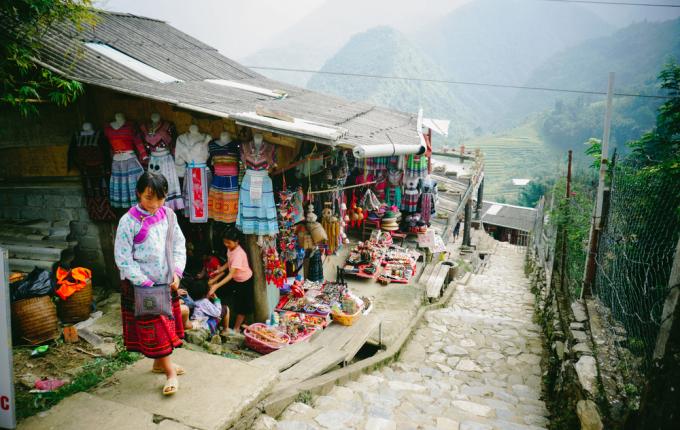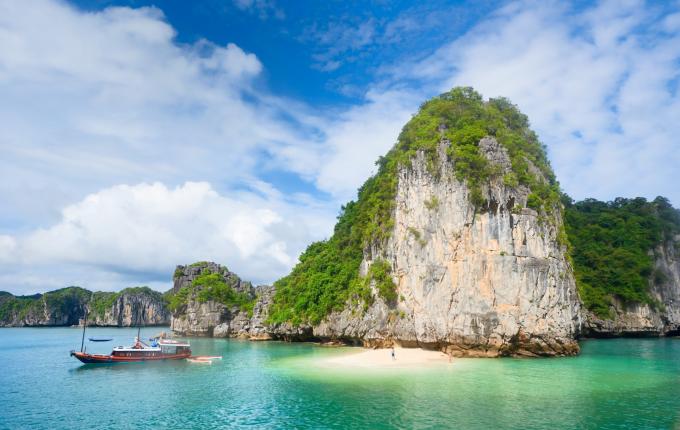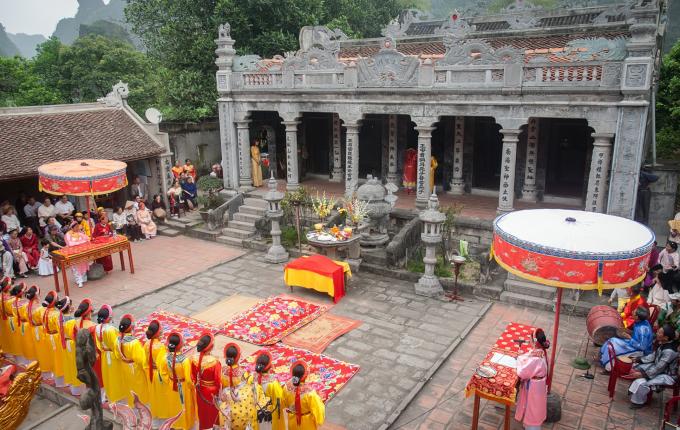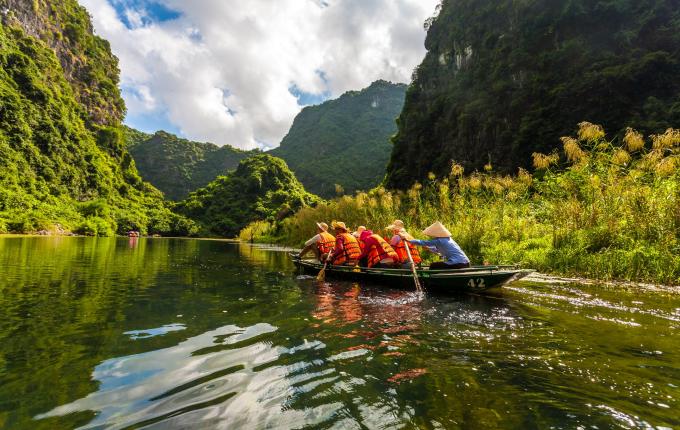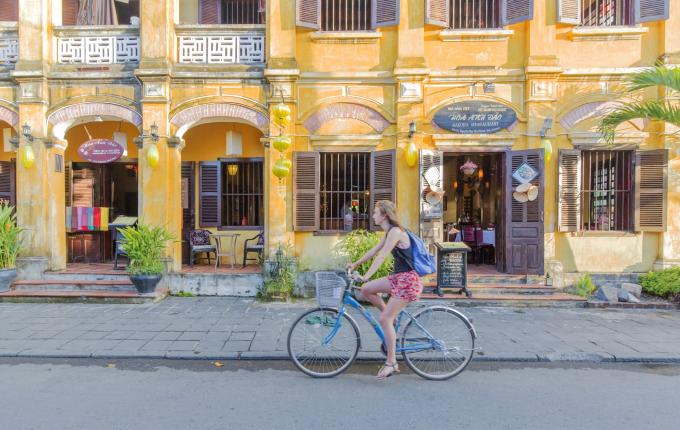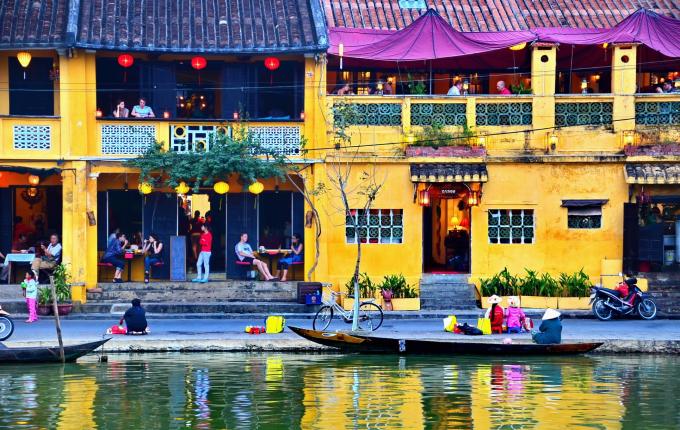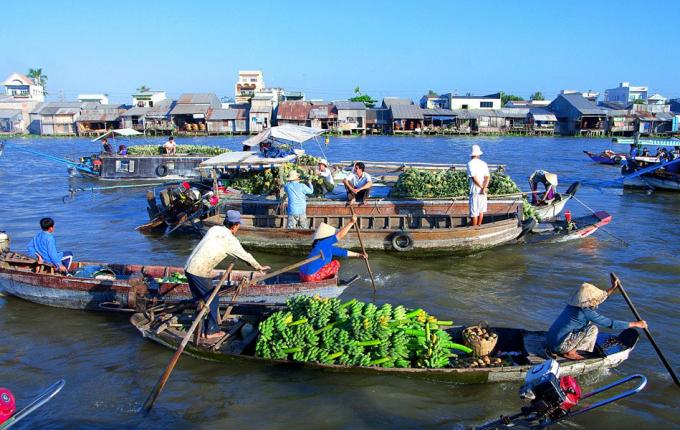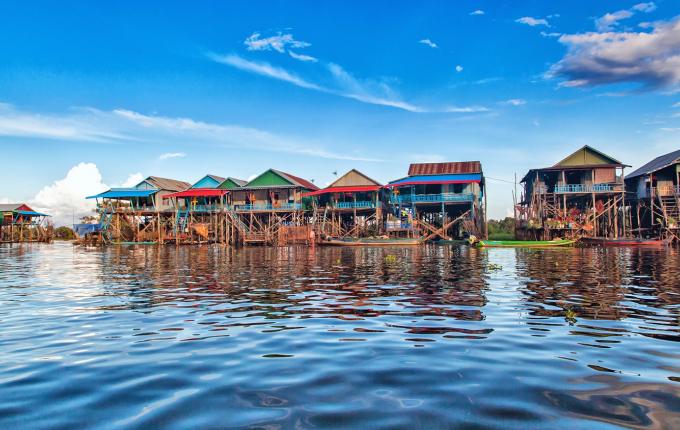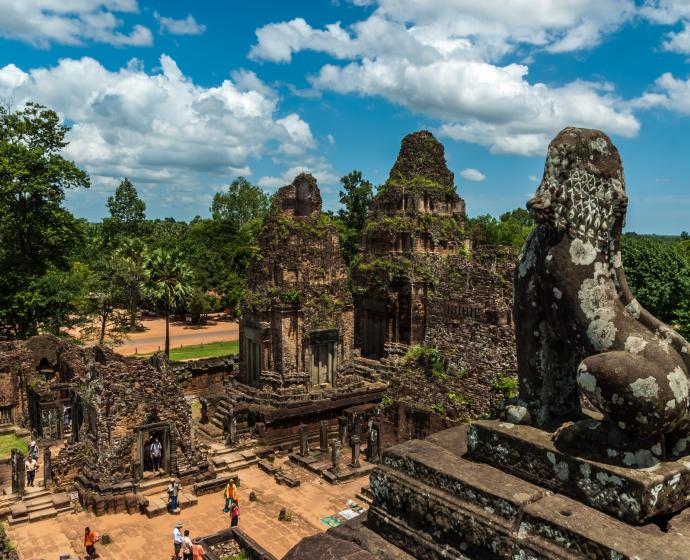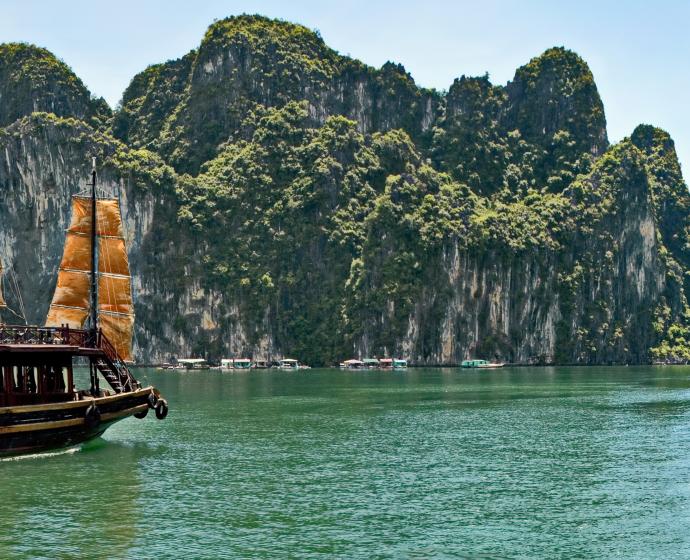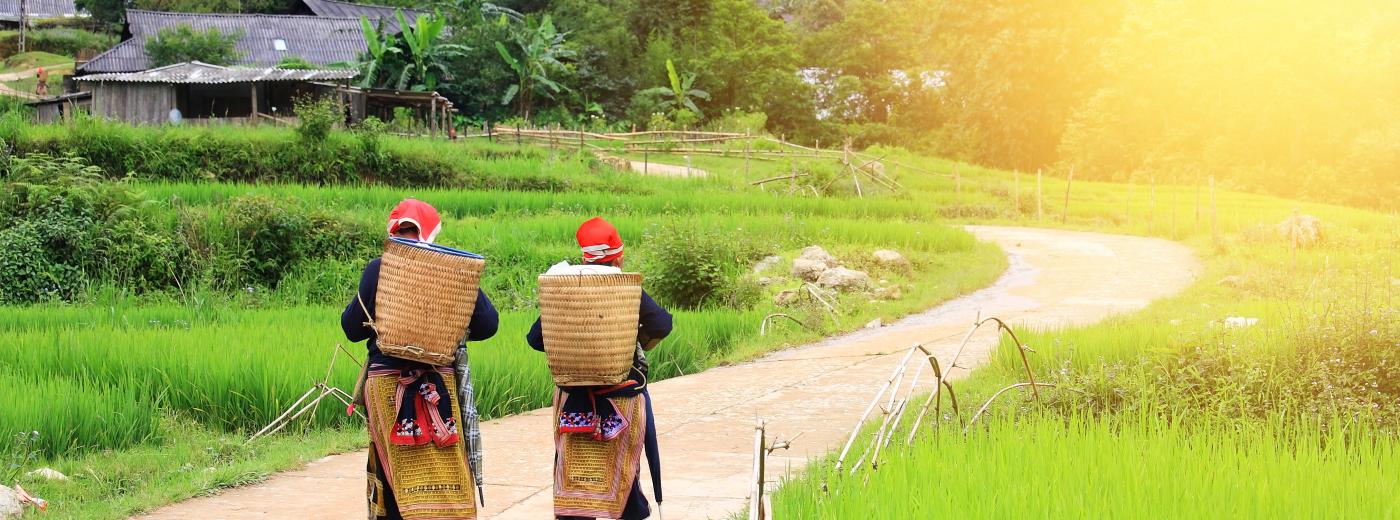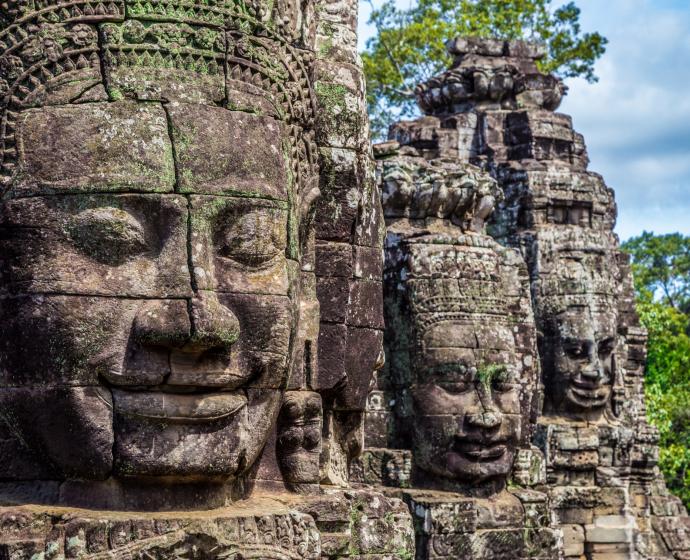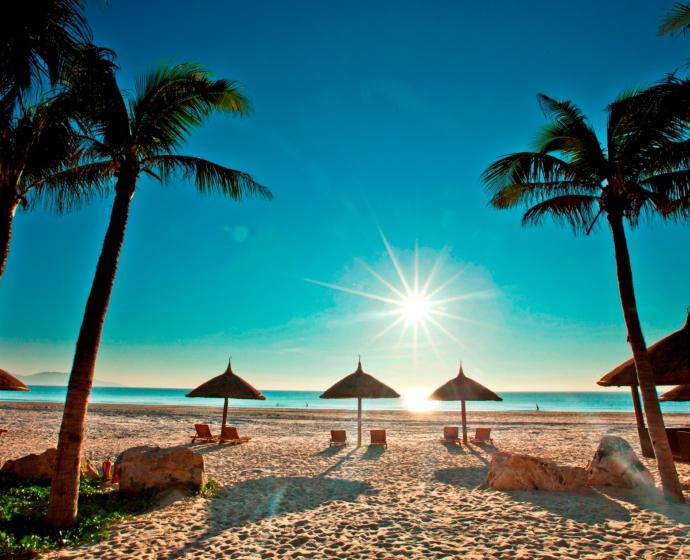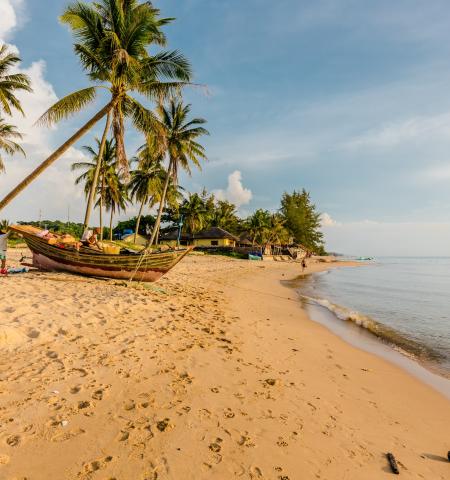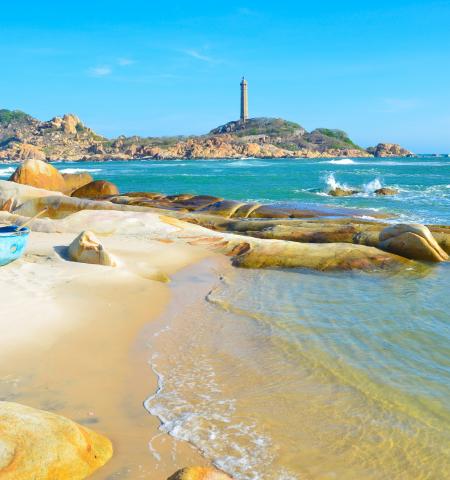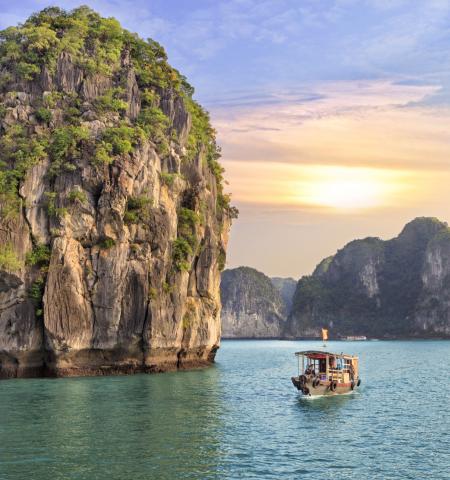You are here
Vue D'ensemble
HANOI / SAPA / HA LONG / NINH BINH / HUE / HOI AN / HO CHI MINH CITY / CAN THO / SIEM REAP
Take an in-depth look at Hanoi, stepping back in time at the Temple of Literature and wandering the vibrant maze of streets in the Old Quarter. Grab a chance to discover untouch corners of the most famous mountainous area in Vietnam - Sapa.Then take an in-depth tour of the temples of Angkor, marvelling at the grandeur of historic thousand-year old temples.
Trip Highlights
CATCH A GLIMPSE OF MODERN VIETNAM
Embrace the modern energy of Hanoi and Ho Chi Minh City, seeing evidence of Vietnam’s rapid development.
DISCOVER VIETNAM’S ETHNIC DIVERSITY
Visit colourful morning markets and villages near Sapa, meeting members of different hilltribe groups and seeing their unique cultures.
CRUISE THE MEKONG RIVER AND VISIT NUMEROUS ASIAN COUNTRIES
Enjoy the slow rhythm of life on the waterways of the Mekong Delta.
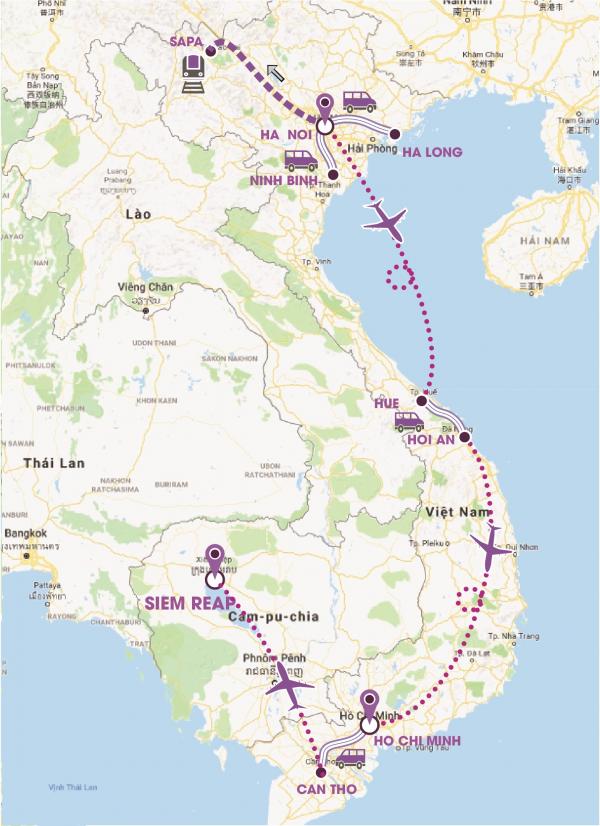
Itinéraire
- Jour1Hanoi Arrival
- Jour2Hanoi
- Jour3Hanoi - Sapa
- Jour4Sapa
- Jour5Sapa - Hanoi
- Jour6Hanoi - Halong Bay
- Jour7Halong Bay - Ninh Binh
- Jour8Ninh Binh - Hanoi - Hue
- Jour9Hue
- Jour10Hue - Hoian
- Jour11 - 12Hoian
- Jour13Hoian - Da Nang - Ho Chi Minh City
- Jour14Ho Chi Minh - My Tho - Can Tho
- Jour15Can Tho - Ho Chi Minh
- Jour16Ho Chi Minh - Fly to Siem Reap - Angkor Thom
- Jour17Floating Village - Fly Home
Hanoi Arrival
Le repas
Déjeuner
Arrival at Noi Bai International Airport.
Morning city tour to visit Ho Chi Minh’s Stilt House and Mausoleum, the President Place, One Pillar Pagoda, the thousand year-old Tran Quoc Pagoda and Temple of Literature – the first university of Vietnam. Extensive Cyclo tour around Hoan Kiem Lake and through the lively streets and alleys of the Old Quarter in the afternoon.
Sapa
Le repas
Petit-déj
Déjeuner
After breakfast, transfer out of town to the remote villages Ta Van and Lao Chai with a rich culture that has not been damaged by the modern life. Stroll through the surrounding countryside and enjoy the picturesque landscape of spectacular rice fields, mountains, streams and hill tribe houses.
Sapa - Hanoi
Le repas
Petit-déj
Déjeuner
Trek south of Sapa towards the busy village of Cat Cat located at the bottom of Muong Hoa Valley and near the stunning Cat Cat waterfall, which is an old village of H’mong ethnic. Immerse yourself with the local ethnic people and test your traditional fabric weaving skills.
Return to Hanoi by car in the afternoon.
Hanoi - Halong Bay
Le repas
Petit-déj
Déjeuner
Dîner
Embark on a journey to Ha Long Bay- a UNESCO World Heritage Site. Along the way, beautiful panoramic views of the rural village and paddy fileds of the Red River Delta. Midday arrival in Ha Long city and board a junk cruise. Seafood lunch on the bay. Spend the afternoon cruising around Halong Bay’s thousands of limestione islets and caves. Visit a natural grotto with spectacular formations en-route.
Halong Bay - Ninh Binh
Le repas
Petit-déj
Déjeuner
Wake up early to watch amazing sunrise over the bay in the morning. Continue cruising before returning to Hanoi. Disembark the cruise around 11 am and transfer to Ninh Binh. Visit the Temples of King Dinh and King Le which were built in the 17th century. The temples are dedicated to King Dinh and King Le, the two kings who lived in 10th century and chose Hoa Lu to build the citadel of the capital city.
Ninh Binh - Hanoi - Hue
Le repas
Petit-déj
Déjeuner
Visit the Valley of Sunshine (Thung Nang) which is located in Dan Khe village. Aboard a small row boat, you will navigate through the flooded rice paddies that flank the limestone mountains, traverse caves and have a lasting moment to connect with the sumptuously natural tranquility of the surroundings.
Transfer to Noi Bai International Airport in Hanoi for your flight to Hue.
Hue
Le repas
Petit-déj
Déjeuner
Explore Hue Imperial Citadel – which was actually a walled fortress and palace belonged to the ancient city of Hue. Continue our trip to visit Emperor Tu Duc’s tomb, the most beautiful work of royal architecture of the Nguyen dynasty and Thien Mu pagoda, one of the main institutions for Buddhism in Vietnam.
Hue - Hoian
Le repas
Petit-déj
Transfer from Hue to Hoi An, Travel over the Hai Van Pass, which on a clear day has spectacular views out to the East Sea and the Lang Co peninsula. Explore Hoi An with your guide and be enchanted by the historic wonders and quaint charm of UNESCO heritage with visits to Chua Ong Pagoda, Chinese Assembly Halls, Tan Ky ancestral house, and the Japanese Bridge. Take a walk through town and seeing remarkably well-preserved traditional houses that have withstood 200 years of weather and war.
Hoian - Da Nang - Ho Chi Minh City
Le repas
Petit-déj
Déjeuner
Arrival in Ho Chi Minh City. Take a walk to visit Reunification Place (former Presidential Place), Dong Khoi Street, Opera House, City Hall or Cathedral. Send your postcards from the pretty French colonial-style post office built by Gustave Eiffel in 1891 and visit the Ben Thanh market, an 11,000 m covered market, which offers the visitor an assortment of local produce.
Ho Chi Minh - My Tho - Can Tho
Le repas
Petit-déj
Déjeuner
Transfer to My Tho in the Mekong Delta which has extensive network of thousands of water channels extending over 40,000 km2. The landscape is beautiful with its yellow rice fields and green orchards. The main mean of transportation is by boat. Boarding a traditional boat for a trip down the Mekong River, explore the canals and their lush green vegetation. Don’t miss the orchards where you can listen to the traditional tunes of the South while tasting a diverse selection of tropical fruits. Discover the local way of producing coconut candy and rice cake. Continue our trip to Can Tho, a university town amidst three rivers in the heart of the delta. Once part of the Khmer Kingdom, many ethnic Khmers still live in the Mekong Delta.
Can Tho - Ho Chi Minh
Le repas
Petit-déj
Déjeuner
Life starts early in this part of the country, and so your morning will begin early for a visit to Cai Rang floating market which is usually already bustling by 07:00. As one of the main trading centers of the Mekong Delta, Cai Rang is the place for locals to sell and buy a wide range of products catering to their daily lives. Besides staple commodities, this market is ideal for those looking for local produces at bargain prices. That includes anything from fruits freshly harvested from orchards like durian, milk fruit, rambutan, mangosteen, and grapefruit to other processed foods.
Visit an Ancient House, the two-centuries-old communal house featuring French colonial architecture and its serene garden, a vestige of Can Tho’s very own fine architecture and antique.
Return to Ho Chi Minh City after lunch.
Ho Chi Minh - Fly to Siem Reap - Angkor Thom
Le repas
Petit-déj
Déjeuner
Dîner
Angkor Thom, meaning “Great City” in Khmer, was the last capital city of the Angkorean Empire. Your exploration begins at the South Gate, one of the four gates into the city, which leads to the Bayon. The former state temple best recognized by the hundreds of serenely smiling faces, each over 4 meters tall, sculpted onto some 50 remaining towers. You will walk through narrow maze-like hallways and corridors, stairs and towers to discover the bas-relief decorations that adorn the wall of the monument.
Moving north of Bayon, you will discover the Baphuon, a magnificent 11th Hindu temple converted to the worship of Buddha in the 15th century before entering the Royal Palace grounds.
Just south of Angkor Thom lies the highlight of the UNESCO Heritage Site is Angkor Wat, the pride of Cambodia. The temple complex was built in the 12th century under King Suryavarman II and epitomizes the accomplishment and splendor of Khmer architecture, culture and religion. The five towers that form the temple’s mountain are flanked by galleries with ornate carvings in rose and grey sandstone. As you enter the causeway to cross the moat surrounding the temple, you can begin the visual feast. Try not to miss sunset over Angkor Wat, best viewed from the steps of Pre Rup Temple!
Floating Village - Fly Home
Le repas
Petit-déj
Déjeuner
Visit the floating village Chong Khneas which sits on Tonle Sap. Embark on a boat to sample daily life in the region’s largest freshwater lake that once supplied food for the Angkorean Empire. When it basks in the warm late afternoon light Chong Kneas is picture-perfect, especially when viewed from the nearby hills.
Transfer to the airport for your return flight.
Date de départ
Toute visite peut être privée. Votre groupe, vos dates!
Envoyer
- Professional and experienced English speaking guide on day excursion. (All airport transfers without guide)
- Modern and comfortable vehicle with air-conditioner during the trip
- Accommodations with buffet breakfast.
- Meals as mentioned in the itinerary (B: Breakfast; L: Lunch; D: Dinner; Br: Brunch)
- Entrance fees all sights mentioned per program
The starting price mentioned is per person and based on two travelers.
- International and domestic flight
- Vietnam and Cambodia visa fee
- Other meals not clearly described in the program
- Travel insurance
- Tips and Personal expenses such as drinks, telephone, and laundry (tip suggestion but NOT compulsory)
Print Preview
Compagnie
Services
Contactez-nous
- No. 90, Pho Duc Chinh, Ba Dinh, Hanoi, Vietnam.
- Tél: (+84-24) 37 150 831
- Fax: (+84-24) 37 151 826
- info@tamtravel.com.vn
- sales@tamtravel.com.vn
Partenaires
© 2017 by TamTravel Ltd. All Rights Reserved.






